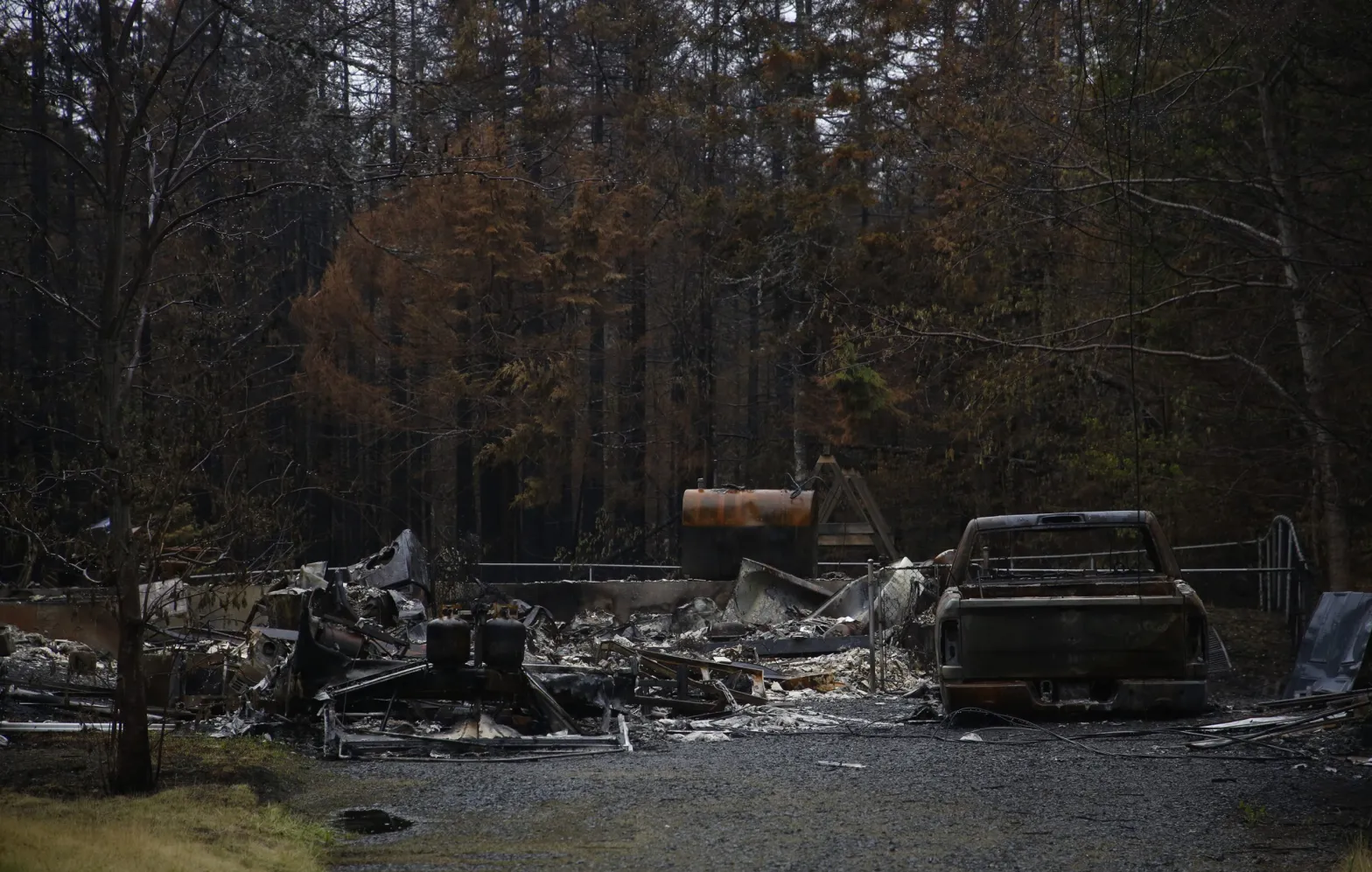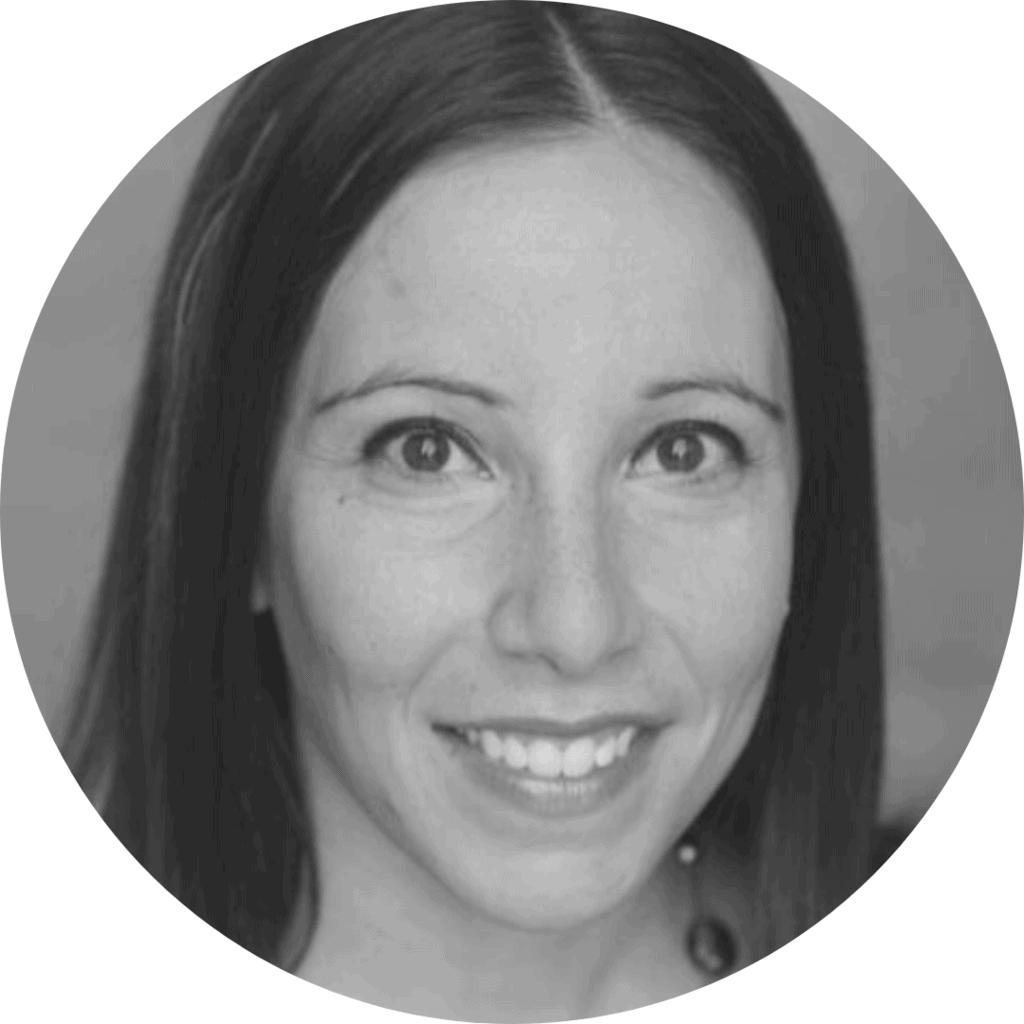Natural disasters are becoming the norm
While they may have been less frequent until recently, Halifax area residents are no strangers to natural disasters. Ryan Hartlen, Managing Broker for Re/Max Nova in the Halifax area, weighs in: “We’ve had some hurricane activity over the last couple of years, and then the wildfires, plus some really bad flooding recently. We used to be a province where that kind of thing never happened, but now, all of a sudden, it’s like we’re getting more than our share.
“(Before) we’d look at other parts of the world or even Canada and be sympathetic yet take for granted that this stuff doesn’t happen here. But, that is no longer the case.”
The fires happened in May in an area called Hammonds Plains, a suburb about 20 minutes outside of Halifax. Hartlen explains the area is densely populated and quite sought-after with beautiful homes and large lots — a place where nobody saw the fires coming.

A property destroyed by a wildfire is seen in Hammond’s Plains, N.S., during a media tour, Tuesday, June 6, 2023. Credit: THE CANADIAN PRESS/POOL, Tim Krochak
The challenge
“The fires, in particular, were really tough … they probably levelled a couple hundred homes,” Hartlen recalls. “These were bigger with multiple people living in the homes — families, pets, and extended family members, too.”
Aside from the direct impact the fires had on those who lost their homes, Halifax communities now face the follow-up effects of the area’s housing shortage. Hartlen acknowledges this has been a narrative in many different places, but, over the last few years, it’s been big in Halifax.
“What do you do with 200 people out of the market trying to find rentals? It’s been a tough challenge — the (Hammonds Plains) area itself is going to take quite a while to rebuild. Plus, there’s already a housing shortage, so this doesn’t help the situation,” Hartlen laments.
Even people who are insured need short to long-term rentals until their insurance gets sorted out and they can rebuild, or until they choose to look for housing in totally different areas.
Hartlen points out what a learning experience this has been. “The potential housing logistics issue has never really been tested before. To see how it can impact the neighbourhoods within the city and what responses were needed was a real eye-opener.”
The after-effects
As a result of the unexpected influx of people looking for housing, more attention was put on peripheral neighbourhoods that weren’t as affected by the fires.
“Before we saw any actual real estate industry impacts, it was more of a humanitarian focus,” Hartlen points out. “People wondered what they could do for those affected to help get them settled, at least temporarily, find what they need, and look after kids — that kind of stuff.”
From there, the community began experiencing long-term effects. “These aren’t things that get sorted out in a few weeks and go away. A lot of these people are still either renting short-term, still looking, or, at the very least, still trying to sort out what’s going on with their insurance claims. So, it’s added a more unique layer to our side of the real estate world,” Hartlen observes.
Indeed, people are not only displaced from their homes but also thrown into a market in which they don’t want or expect to compete with others who have been trying to buy homes, say, for a year and are really motivated.
“It’s just a weird kind of position to put them in,” Hartlen says. “And that’s if they’re trying to buy something. The other route is waiting to see what their insurance policies are going to respond to and how that looks.” And when it comes to insurance claims, this adds a whole other level of challenge for some folks.
Insurance
Environmental events like this year’s fires and floods have been a catalyst in educating people about how insurance works. “In our business, we work through sales with conditions to ensure people are comfortable with getting insurance on a particular home and that the specific coverage is satisfactory,” says Hartlen.
“In the past, this has been more of a simple “checkbox” type of thing with no exhaustive approach, but people are now surprised about how things work, particularly with the floods … we’ve had a very, very wet summer.” He says the more recent floods have impacted residents similarly to the fires.
The problem is that people tend not to understand what their coverage looks like and how it works when they have to respond to emergencies. “Insurance companies stop writing policies in emergency-declared situations and areas until things get resolved. This impacts all of the pending agreements that may not even be anywhere near the affected area because lenders won’t release money until properties are insured,” Hartlen explains.
He’s been told that the floods’ financial impact will be more than the combined impact of the fires and the previous hurricanes (which says a lot, as the hurricanes were in a much more isolated area and impacted fewer people).
“The flooding is huge, and we’ll see a lot of homeowners’ insurance and renewals change with exemptions or coverage that doesn’t include flood, sadly. Also, places that never flooded before will suddenly have to disclose that they’ve flooded, which can impact a sale,” he points out.
Looking forward: The rebuild process
These days, the Halifax area is seeing some normalcy again, but like other Canadian metropolises, the shortage of affordable housing and lack of inventory for sale continues to plague the market. “It’s higher than it was about a year ago, but in the grand scheme and a 10-year picture, (inventory) is still very, very low, and demand still seems pretty strong,” Hartlen says.
On top of this, like in many other markets, rebuilding homes in the Halifax area isn’t cut and dry.
“It’s such a long process because of the housing shortage. Many builders don’t have the bandwidth to put up 50 homes here and another 50 homes there…it just doesn’t work like that,” Hartlen points out. He’s seen builders inundated with trying to rebuild, being overloaded with their existing projects already, plus the demand from buyers who were already in the market before the fires.
“All of the support that we have around here, I think the Maritimes are kind of known for, and it’s shown. But, at the end of the day, the main issue these people are dealing with is not having their house, and that’s a hard thing to just fix.” Hartlen stresses they’ve got to go through the process and be patient.
He says he and his realtors are working more sensitively these days because many of the displaced people are their clients — including two of the brokerage’s associates who lost their homes.
“It’s touched everybody in some way…and definitely opened all of our eyes to other parts of the country — like Kelowna or the Northwest Territories — that have these things going on more regularly than we do,” Hartlen comments.
“We just aren’t used to having (natural disasters) as a discussion point. So, sadly, moving forward, there will probably be some things said, when looking at the (Hammonds Plains) neighbourhood, about it being impacted by fire,” he says.
Things like trees and infrastructure have to be replanted, reconfigured, restored, and rebuilt — which is something residents now have to consider when buying and rebuilding in and around the area.

Emma Caplan-Fisher is an editor and writer for REM. She has over a decade of experience in various content types and topics, including real estate, housing, business, tech, and home & design. Emma’s work has also been featured in Cottage Life, the Vancouver Real Estate Podcast, the Chicago Tribune, Narcity Media, Healthline, and others. She holds a Certificate in Editing from Simon Fraser University.















This is interesting and I can see how in areas like Halifax subject to natural disasters will have their work cut out for them in the near future.
I would argue, though, that this is more a function of record immigration levels combined with an increasingly difficult process to navigate to develop land and build combining to place strain on our housing market.
Interestingly, the best IPCC, NOAA and forest fire records show no increase (actually a slight decrease) in floods, forest fires and hurricanes over the last 100 – 120 years. The main culprit is the expanding bullseye effect (more homes being built in areas subject to extreme weather) as populations increase.